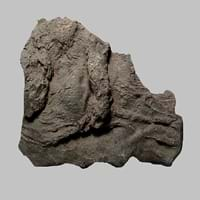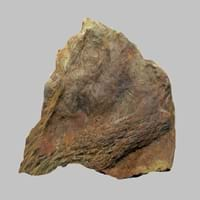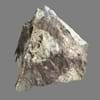Definition
During the impact melted material forming a breccia containing glass and crystal or lithic fragments together form Suevite rock.
Siltstone can be defined as a fine-grained sedimentary rock which mainly consists of consolidated silt
Origin
Canada, Germany
Unknown
Discoverer
Unknown
Unknown
Etymology
No etymologies found
From English word silt and stone and from Proto-Indo-European root sal and stainaz
Class
Metamorphic Rocks
Sedimentary Rocks
Sub-Class
Durable Rock, Medium Hardness Rock
Durable Rock, Hard Rock
Group
Not Applicable
Not Applicable
Other Categories
Coarse Grained Rock, Opaque Rock
Fine Grained Rock, Opaque Rock
Color
Black, Brown, Colourless, Green, Grey, Pink
Brown, Red, Reddish Brown
Durability
Durable
Durable
Scratch Resistant
Yes
Yes
Interior Uses
Decorative Aggregates, Homes, Interior Decoration
Decorative Aggregates, Interior Decoration
Exterior Uses
As Building Stone, As Facing Stone, Garden Decoration, Office Buildings
As Building Stone, As Facing Stone, Garden Decoration
Other Architectural Uses
Curbing
Curbing
Construction Industry
As Dimension Stone, Cement Manufacture, for Road Aggregate, Making natural cement, Manufacture of Magnesium and Dolomite Refractories
Building houses or walls, Cement Manufacture, Construction Aggregate, for Road Aggregate, Making natural cement, Raw material for the manufacture of mortar
Medical Industry
Not Applicable
Not Yet Used
Antiquity Uses
Artifacts, Monuments, Sculpture
Artifacts, Sculpture, Small Figurines
Commercial Uses
As a Feed Additive for Livestock, Gemstone, Metallurgical Flux, Source of Magnesia (MgO)
Raw material for the manufacture of mortar, Soil Conditioner
Types
Phyllosilicates, Calcite
Not Available
Features
Host Rock for Lead
Available in Lots of Colors and Patterns, Easily splits into thin plates, Generally rough to touch, High silica content, Very fine grained rock
Archaeological Significance
Monuments
Used
Not Yet Used
Famous Monuments
Data Not Available
Not Applicable
Famous Sculptures
Data Not Available
Data Not Available
Pictographs
Used
Not Used
Petroglyphs
Used
Not Used
Formation
Suevite is a metamorphic rock consisting partly of melted material, typically forming a breccia containing glass and crystal or lithic fragments, formed during an impact event.
Siltstone is a type of sedimentary rock which is formed from fine rock particles. As the particles of eroded rock travel along with water, the edges of the rock are worn-out by water into a rounded shape.
Mineral Content
Coesite, Quartz, Stishovite
Calcite, Clay, Clay Minerals, Feldspar, Micas, Quartz, Sand, Silica, Silt
Compound Content
CaO, Carbon Dioxide, MgO
Aluminium Oxide, CaO, Iron(III) Oxide, Potassium Oxide, MgO, Sodium Oxide, Silicon Dioxide
Types of Metamorphism
Burial Metamorphism, Cataclastic Metamorphism, Contact Metamorphism, Hydrothermal Metamorphism, Impact Metamorphism, Regional Metamorphism
Not Applicable
Types of Weathering
Not Applicable
Biological Weathering, Chemical Weathering, Mechanical Weathering
Types of Erosion
Not Applicable
Chemical Erosion, Coastal Erosion, Glacier Erosion
Grain Size
Coarse Grained
Fine Grained
Fracture
Uneven
Conchoidal
Streak
Light to dark brown
White
Porosity
Less Porous
Highly Porous
Cleavage
Irregular
Not Available
Toughness
Not Available
2.6
Specific Gravity
2.86
2.54-2.73
Transparency
Opaque
Opaque
Density
2.8-2.9 g/cm3
2.6-2.7 g/cm3
Specific Heat Capacity
Not Available
Resistance
Heat Resistant
Heat Resistant, Impact Resistant, Pressure Resistant, Water Resistant
Deposits in Eastern Continents
Asia
Not Yet Found
China, India, Kazakhstan, Mongolia, Russia, Uzbekistan
Africa
Not Yet Found
Namibia, Nigeria, South Africa
Europe
England, France, Germany, Great Britain, Netherlands, Sweden, Switzerland, United Kingdom
Austria, Denmark, Germany, Great Britain, Netherlands, Norway, Poland, Sweden, Switzerland, United Kingdom
Others
Not Yet Found
Greenland
Deposits in Western Continents
North America
Not Yet Found
Canada, USA
South America
Not Yet Found
Brazil
Deposits in Oceania Continent
Australia
Not Yet Found
New South Wales, New Zealand
All about Suevite and Siltstone Properties
Know all about Suevite and Siltstone properties here. All properties of rocks are important as they define the type of rock and its application. Suevite belongs to Metamorphic Rocks while Siltstone belongs to Sedimentary Rocks.Texture of Suevite is Earthy whereas that of Siltstone is Clastic. Suevite appears Banded and Siltstone appears Rough. The luster of Suevite is earthy while that of Siltstone is dull. Suevite is available in black, brown, colourless, green, grey, pink colors whereas Siltstone is available in brown, red, reddish brown colors. The commercial uses of Suevite are as a feed additive for livestock, gemstone, metallurgical flux, source of magnesia (mgo) and that of Siltstone are raw material for the manufacture of mortar, soil conditioner.










